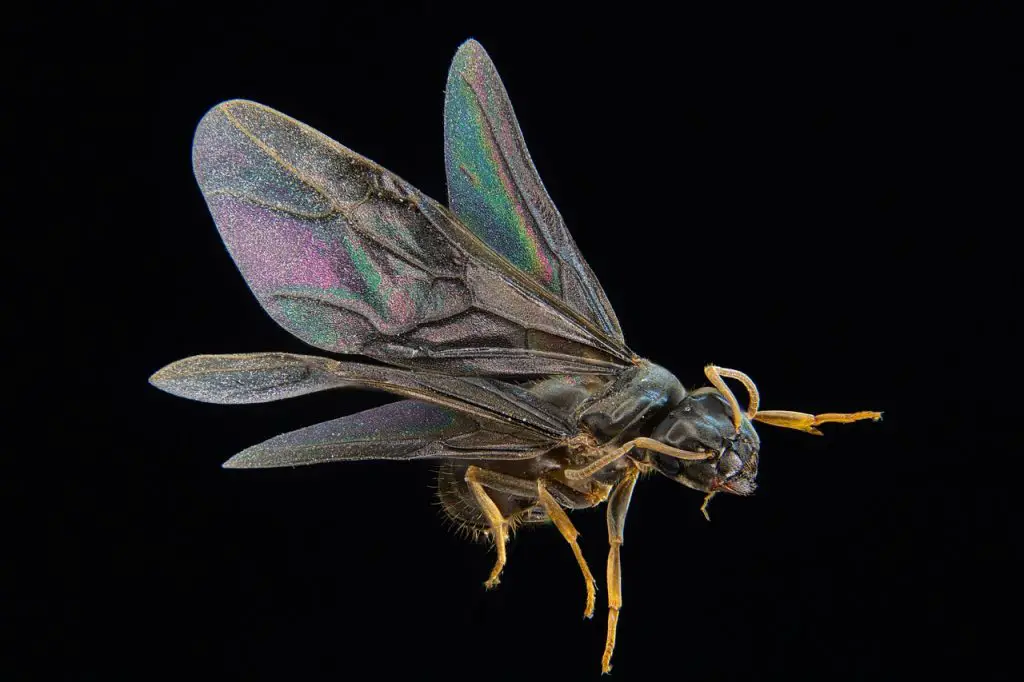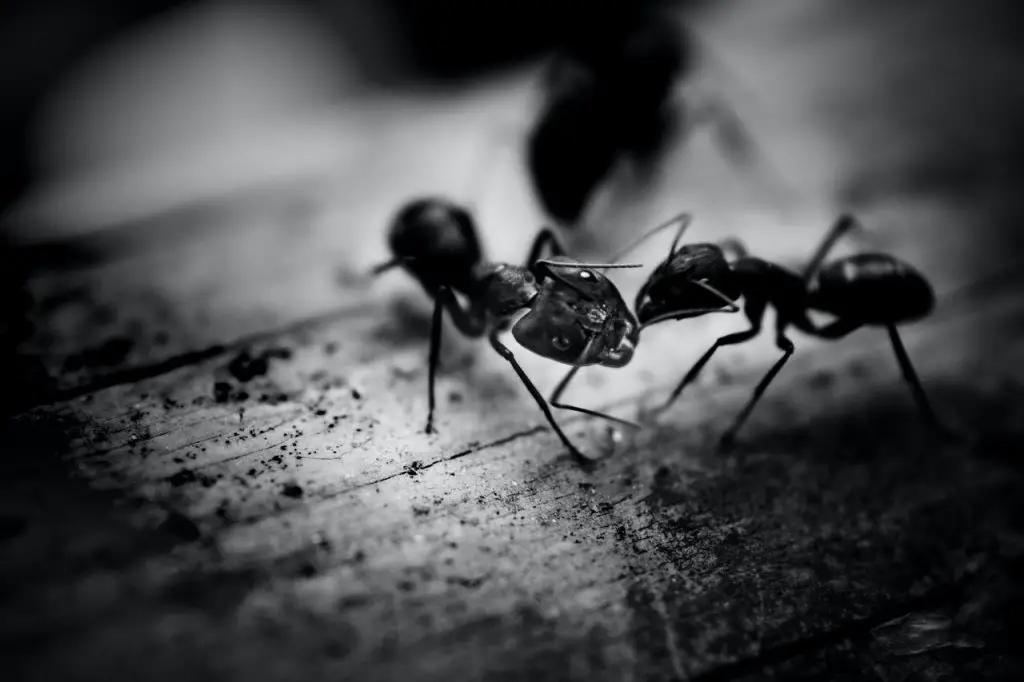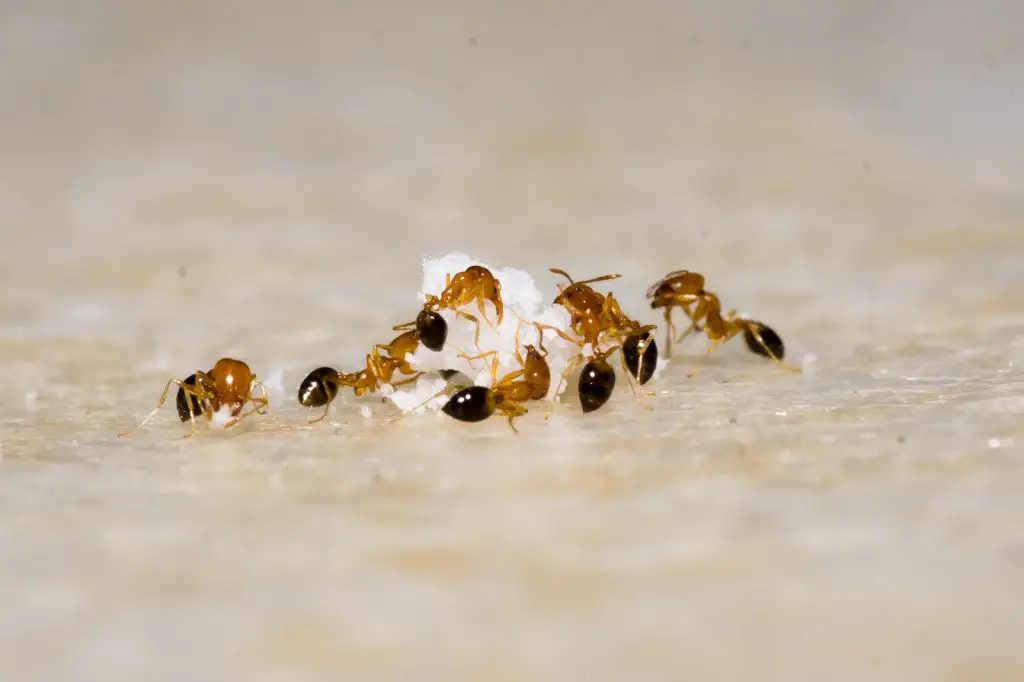Imagine the awe-inspiring sight of a murmuration of starlings twisting and turning in the sky, but with a twist – it’s not birds, but ants! Yes, you heard that right, ants with wings.
These marvels of nature, often misunderstood, and sometimes feared, are the superheroes of the insect world. With the precision of a fighter pilot and the resilience of an ultramarathon runner, these fascinating creatures command the air, the ground, and our attention.
Join me as we delve into the mesmerizing world of winged ants, where flying is not just a dream, but an astonishing reality.
Ants With Wings: Unraveling the Secrets of Their Aerial Abilities
Ants with wings, also known as alates, represent a fascinating facet of the natural world. You may have come across these unique creatures in your house or garden. While they might seem strange at first glance, these winged ants are a regular part of the ant life cycle.
In the vast world of ants, with over 15,700 distinct species globally, many have the potential to grow wings during a specific phase of their lives. This extraordinary transformation isn’t a random event but a significant part of their reproductive process.
These ants grow wings for a very particular reason to ensure the propagation of their species. With wings, they can take flight, mate, and establish new colonies – a critical phase akin to people leaving their homes to build their own families.
The spectacle of winged ants taking flight is typically witnessed during the summer. The perfect conditions seem to be warm, humid days followed by rainfall. Post a summer shower, the skies have a high chance of being dotted with these little flyers.
While the sight of these winged ants can be a source of fascination, their presence, particularly inside your home, can also be a warning sign. Spotting winged ants indoors often indicates that an ant colony is concealed nearby, potentially signaling an infestation or structural damage to your house.
In the grand scheme of nature, ants with wings play an integral role. They contribute to the formation of new ant colonies and ensure the health of the global ant population. The next time you come across these winged ants, know that you’re witnessing an essential and intriguing phase of the ant life cycle.
What Ants Have Wings?
Several species of ants develop wings during a certain stage of their life cycle.
Here are a few of the most common species where you might observe this phenomenon:
- Carpenter Ants: These are large ants that are often found in wooded areas. They’re known to cause damage to wood in buildings, hence their name.
- Fire Ants: Fire ants are a reddish variety of ants known for their painful sting. The winged members of this species are typically seen during the warm months.
- Pavement Ants: Pavement ants are named for their habit of nesting under sidewalks and driveways. They are common in many parts of the world and you might see winged individuals during the summer.
- Harvester Ants: Harvester ants gather seeds for food, hence their name. The winged ants in these species are typically seen during the late summer or fall.
- Pharaoh Ants: These ants are typically found indoors, in warm locations. The winged ants are rarely seen, but they do exist within this species.
- Argentine Ants: Argentine ants are an invasive species that can create large “supercolonies.” Winged ants in this species often emerge in the spring or fall.
Remember, seeing winged ants outdoors is a natural part of the ant life cycle. However, if you see them inside your home, it could be a sign of an ant infestation.
Ants With Wings in the Bathroom

Finding ants with wings in your bathroom can be a surprising sight, but it’s more common than you might think. Bathrooms provide the perfect environment for certain types of ants because of the consistent presence of water and the possibility of food residues.
When you spot winged ants in your bathroom, they are likely from a species that thrives in damp environments. For instance, carpenter ants, pharaoh ants, and moisture ants often find bathrooms to be attractive habitats due to the availability of moisture.
Seeing winged ants inside can also indicate that there’s an ant colony nearby within the structure of your home. This is especially true for carpenter ants, which burrow into damp wood to build their colonies. If you’re finding these ants in your bathroom, it might be a sign of a more significant issue, such as a hidden infestation or even water damage.
How to get rid of Ants with wings in the bathroom?
Discovering ants with wings in your bathroom can be a frustrating experience. To effectively get rid of them, follow these steps:
- Identify the entry points: Carefully observe the bathroom to determine how the ants are entering. Look for cracks, gaps, or openings around windows, doors, pipes, or any other potential entry points. Seal these openings using caulk or weatherstripping to prevent further ant infiltration.
- Clean thoroughly: Keep your bathroom clean and free of food particles, spills, and moisture. Wipe down surfaces regularly, including countertops, sinks, and floors, to eliminate any potential food sources that might attract ants. Pay special attention to areas where water accumulates, such as around faucets and drains.
- Remove water sources: Ants require water to survive, so fix any leaky faucets, pipes, or plumbing issues. That may be providing a water source for them. Ensure that the bathroom remains dry as much as possible to discourage ant activity.
- Natural deterrents: Some natural substances are known to repel ants. Consider using essential oils such as peppermint, lemon, or tea tree oil, diluted with water. And spray them around potential entry points or areas where ants are frequently seen. Ants dislike the strong scent of these oils and may be deterred from entering.
- Ant baits or traps: Set up ant baits or traps in strategic locations. Such as near entry points or along ant trails. These baits contain attractive bait substances mixed with slow-acting insecticides. The ants carry the bait back to the colony, effectively eliminating the entire nest. Follow the instructions on the product carefully for safe and effective use.
Small Black Ants With Wings

Small black ants with wings can be found in many environments and may belong to different species. Most commonly, they are pavement ants or carpenter ants. Pavement ants are small, dark brown to black ants that typically build their colonies in or under pavement cracks.
The winged individuals, known as swarmers, usually emerge during the summer months for their mating flights. On the other hand, carpenter ants can vary in size, but the smaller ones might be mistaken for small black ants.
These ants are typically black or dark brown, and the winged carpenter ants appear during the spring and summer for mating. Regardless of their species, if you spot small black ants with wings indoors, it could indicate a nearby ant colony and potential infestation.
Ants With Wings Bite: Unmasking the Unexpected Nippers of the Skies
While it might be surprising, ants with wings, also known as alates or swarmers, can indeed bite. The likelihood of a bite, however, depends on the specific species of ant.
Carpenter ants, for example, are known to bite if they feel threatened. Their bites can be quite painful due to their large size, but they don’t typically pose a serious threat to humans unless an allergic reaction occurs.
Fire ants, whether winged or not, can both bite and sting. Their stings can be painful and result in itchy, red welts. For those allergic to fire ant stings, the reactions can be severe.
In contrast, other winged ants, like pavement ants, are generally not aggressive and rarely bite. Even if they do, their bites are often harmless to humans.
Regardless of the species, ants usually don’t bite unless they feel threatened. If you do get bitten, washing the area with soap and water and applying an antiseptic can help prevent any infection. In case of severe reactions to ant bites or stings, immediate medical attention is necessary.
How to get rid of ants with wings bite?
To alleviate the discomfort and address the bites from ants with wings, you can follow these steps:
- Clean the affected area: Start by gently washing the bite site with mild soap and water. This helps remove any potential irritants or bacteria that could lead to infection.
- Apply a cold compress: Use a cold compress or ice pack wrapped in a cloth to reduce swelling and relieve any pain or itching. Apply it to the bite area for around 10 to 15 minutes at a time.
- Over-the-counter remedies: Consider using over-the-counter topical creams or ointments specifically formulated for insect bites. These products often contain ingredients like hydrocortisone or calamine to help alleviate itching and reduce inflammation.
- Avoid scratching: While it may be tempting, try your best to avoid scratching the bite. Scratching can further irritate the skin and increase the risk of infection.
- Oral antihistamines: If you’re experiencing severe itching or an allergic reaction to the bite, you may find relief by taking an over-the-counter antihistamine. Consult a healthcare professional or pharmacist to determine the right product and dosage for your specific situation.
- Seek medical attention if needed: If the bite becomes increasingly painful, shows signs of infection (such as pus or increasing redness), or if you experience symptoms beyond localized discomfort (such as difficulty breathing or widespread swelling), it’s important to seek medical attention promptly.
- Address the ant infestation: Since the bites indicate the presence of ants, it’s crucial to address any ant infestation in your home. Identify the source of the infestation, seal off entry points, and consider using ant baits or seeking professional pest control services to eliminate the colony.
Conclusion
Ants with wings, also known as alates or swarmers, are a fascinating aspect of the natural world. These winged ants represent the reproductive members of ant colonies, embarking on flights to mate and establish new colonies. While various ant species can develop wings, some of the most common include pavement ants, carpenter ants, and fire ants.
Spotting ants with wings in your bathroom can be concerning, but you can take action. Seal entry points, keep the area clean and dry, use natural deterrents, and set up ant baits. For persistent issues, consult professional pest control services for faster results.
Remember, prevention plays a crucial role in managing ant infestations. By practicing good sanitation habits, sealing off entry points, and addressing any water or moisture issues, you can discourage ants from making your space their home.
Appreciating the intricate life cycles and behaviors of ants with wings allows us to better understand and coexist with these fascinating creatures. So, the next time you encounter ants taking flight, remember the remarkable journey they undertake to ensure the survival of their colonies.



